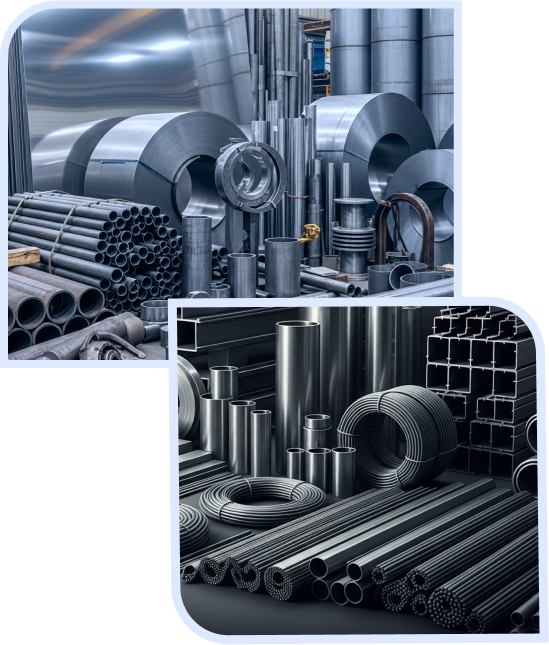Tee
What is a Socket Weld Tee?

A Socket Weld Tee is a high-pressure pipe fitting used to distribute or combine fluid flow at a 90° branch from the main pipeline. Designed for small-diameter piping systems (typically up to 4 inches), these fittings are ideal for pressurized fluid lines where high strength and reliable performance are critical.
The design involves a socket at each end where pipes are inserted and welded externally, ensuring leak-free operation and strong mechanical connection. Socket weld tees are commonly used in refineries, petrochemical units, steam lines, and power plants, available in equal (straight) and reducing (branch size smaller than the run) configurations.
Key Features
- Branch Flow Control – Allows perpendicular diversion or combination of flow.
- Welded Socket Ends – Delivers leak-tight and vibration-resistant sealing.
- Compact Configuration – Ideal for space-restricted pipe networks.
- High-Pressure Capability – Rated for Class 3000, 6000, and 9000 applications.
- Available in Multiple Alloys – Carbon steel, stainless steel, and specialty grades.
Types of Socket Weld Tee
- Socket Weld Equal Tee
- Socket Weld Reducing Tee
- Socket Weld Lateral Tee (on request)
- Socket Weld Tee with Drain or Instrument Ports (custom)
Specifications
Mechanical Properties
Chemical Composition
Equivalent Grades
Weight Chart
Specifications
| Parameter | Details |
|---|---|
| Sizes | ½" to 4" (DN15 – DN100) |
| Pressure Ratings | Class 3000 / 6000 / 9000 |
| Material Options | ASTM A105 (Carbon Steel), A182 F304/F316 (SS) |
| Standards | ASME B16.11, MSS-SP-83, SP-95 |
| Connection Type | Socket Weld (SW) |
| Property | Typical Value |
|---|---|
| Tensile Strength | 485 – 700 MPa |
| Yield Strength | 250 – 450 MPa |
| Elongation | 20% – 30% |
| Temperature Range | -46°C to +600°C |
| Element | Composition (%) |
|---|---|
| Carbon (C) | 0.08 – 0.35 |
| Manganese (Mn) | 0.60 – 1.65 |
| Silicon (Si) | 0.15 – 0.80 |
| Chromium (Cr) | 18.0 – 20.0 (SS Only) |
| Nickel (Ni) | 8.0 – 10.5 (SS Only) |
| Molybdenum (Mo) | 2.0 – 3.0 (For 316 Only) |
| Phosphorus (P) | ≤ 0.035 |
| Sulfur (S) | ≤ 0.040 |
| Iron (Fe) | Balance |
| Standard | Equivalent Grade |
|---|---|
| ASTM | A105, A182 F304 / F316, A350 LF2 |
| ASME | B16.11 |
| MSS-SP | SP-83, SP-95 |
| DIN | 2950, 2975 |
| Tee Type | Size (inches) | Weight per 100 pcs (kg) |
|---|---|---|
| Equal Tee | ½" | 9.20 |
| Equal Tee | 1" | 12.00 |
| Reducing Tee | ¾" | 10.80 |
| Equal Tee | 1½" | 16.50 |
| Reducing Tee | 2" | 19.30 |
Applications of Socket Weld Tee
Construction &
Infrastructure
Automotive & Heavy
Equipment
Manufacturing &
Fabrication
Medical & Laboratory
Equipment
Electrical &
Electronics Assembly
Oil, Gas & Petrochemical
Installations
Do you have questions?
What’s the main difference between equal and reducing tees?
An equal tee has all three openings of the same size, while a reducing tee has a smaller branch outlet compared to the run.
Can socket weld tees handle high-temperature media?
Yes. When made from suitable grades (e.g., Alloy Steel or SS 316), socket weld tees can withstand temperatures above 600°C.
Are your tees available with third-party inspection?
Yes, we provide MTCs and offer TPI inspection (SGS, BV, TUV, etc.) based on client needs.
Do you supply tees with special NDE or hydro testing?
Absolutely. All fittings can be ultrasonically tested, radiographed, or hydrotested upon request.


